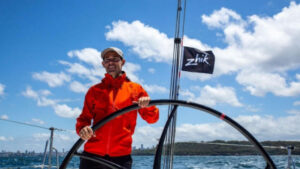The World Economic Forum defines impact investing as an intentional investment approach that seeks to generate both financial returns and measurable social or environmental impact.
This means meeting critical financial objectives, while also addressing the world’s most pressing challenges across sectors such as poverty alleviation, housing, healthcare, education, gender equality, sustainable agriculture, renewable energy, conservation, and microfinance, to name but a few.
It’s a concept that, at least in theory, seems without fault. Who wouldn’t want to make money and make the world a better place too?
Forecasts indicate substantial growth in the global impact investing market, with projections suggesting it could reach $4.5 trillion in total assets under management by 2030. This growth reflects an expected compound annual growth rate (CAGR) of 18.6 per cent from 2023 to 2030.
And, promisingly, it’s moving into the mainstream.
The Impact Investment Summit, where I was recently speaking, was headlined by AFL legend and First Nations advocate Adam Goodes, and was attended by almost 400 high-level investors, family offices, leaders, and impact investment professionals from across APAC.
It focussed on inclusion, climate, and community this year, including how impact investment can remove barriers to entry for those needing investment the most: the socioeconomically disadvantaged and other disenfranchised groups such as Indigenous people, the LGBTQI community, women, people with a disability, and more.
Since its inception, the Impact Investment Summit has been pivotal in building Asia-Pacific’s impact investment community and channelling capital towards positive change. It was recently acquired by The Intermedia Group and will now be driven by Kerry Series of NorthStar Impact Funds.
The Impact X Summit, where I am MC’ing, is Australia’s largest global summit for climate and nature and is more sector-focused.
This aligns with my personal passion for addressing climate change, which is why I find impact investment so compelling.
Investing in private assets can serve as a hedge against volatility in public markets caused by geopolitical instability, climate change, or other global challenges.
Impact venture capital or sustainable private investment provides an even better hedge, as you may actually be investing directly into the solutions to these problems.
But what exactly can impact investment do that other forms of purposeful investing, like ESG, can’t?
A “do good” investment spectrum
“ESG” is a term most people are fairly familiar with by now. In the investment world its application refers to the idea of evaluating and integrating environmental, social, and governance risks and opportunities into investment decisions.
It sits at the lower end of the “do good” investment spectrum because it’s more about what not to do to avoid harm, as a form of risk mitigation, and less about actively doing good.
This could look like avoiding companies with harmful and/or high-risk practices through negative screening, such as tobacco companies or those engaging in modern human slavery.
According to Bloomberg, Global ESG assets are on track to exceed US$54 trillion by 2025, so it’s certainly not to be sniffed at.
Yet in 2024, this is the bare minimum any investor should be aiming for, with many believing the mere avoidance of harm doesn’t take it far enough.
And due to the politicisation of ESG by right-leaning conservative politics, we certainly need to move on from the use of this term.
Philanthropy
On the complete other end of the “do good” investment spectrum is philanthropy.
“Investment” in this category is actually giving away capital with impact being the only expected return.
The Australian Ethical Foundation is a good example of impactful philanthropy. Through funding of cutting-edge research and projects, the Foundation aims to drive high-impact climate solutions.
Since 2000, it has granted over $9 million towards fostering positive change for communities, wildlife, and the environment in Australia and abroad.
Impact investment is a happy – and measurable – medium
Impact investment is about creating societal good while achieving financial returns.
The common misconception is that this necessitates lower financial returns.
It does not.
While some investors may choose concessional returns in order to achieve greater impact, above-market returns are 100 per cent possible with impact investments.
There are many terms for this style of investment, with two of the most common I see being responsible investing and sustainable investing. However I won’t get into all the nuanced differences between these or the various other similar terms.
What I will mention are three pivotal factors that define impact investing: intentionality, additionality, and measurability.
Intentionality means that your investment strategy and investment targets consciously choose to achieve positive social or environmental impact.
Additionality is the specific and direct contribution of the investment or project to increase the net positive impact generated by its activities.
Measurability ensures that the impact can be assessed, quantified, and reported over time.
So it’s not enough for an impact investor to just put their money towards something that looks or feels good.
Impact investments should measure progress against an impact framework that is aligned to something like the United Nations Sustainable Development Goals (SDGs) or EU taxonomy for sustainable activities.
In Australia, impact investing is gaining traction, with the market expected to grow from $30 billion in 2021 to reach a staggering $500 billion by 2025.
Rising awareness of climate change and other societal issues – and a growing number of retail investors seeking values-aligned opportunities – means the momentum behind impact investing is an enormous global trend that will continue to grow.
And it will grow whether you understand or agree with the terminology, or not.
So get in now, learn which sectors you are passionate about, and reap the rewards.
By Jeremy Liddle, executive director of climate, tech, and finance PR & marketing agency, Third Hemisphere
The Impact Investment Summit and Impact X were clients of Third Hemisphere at the time of publishing.
Read MoreESG











